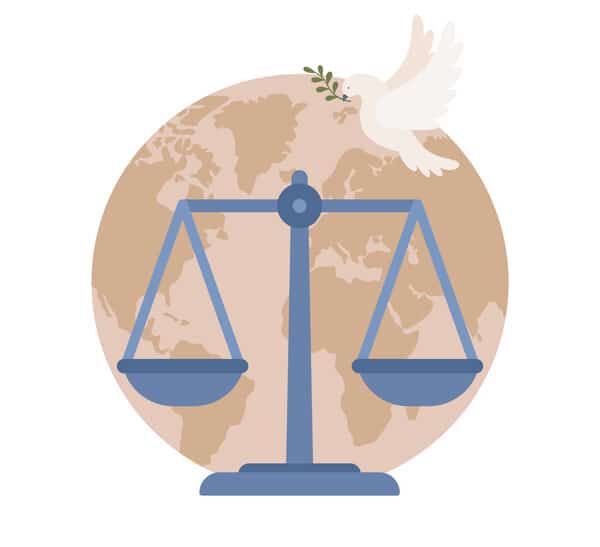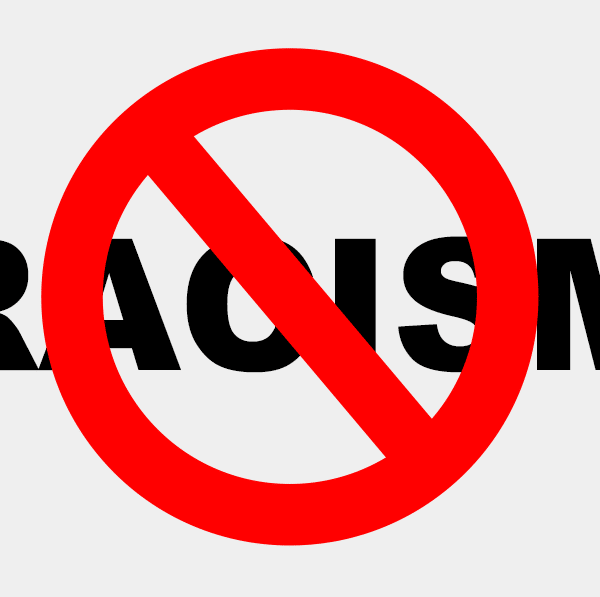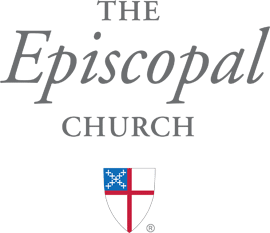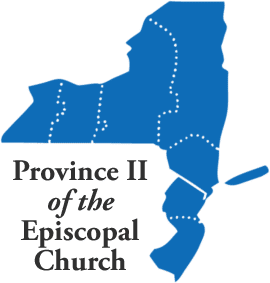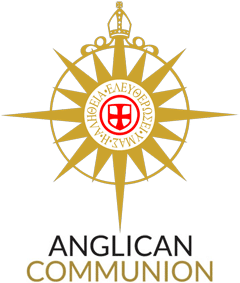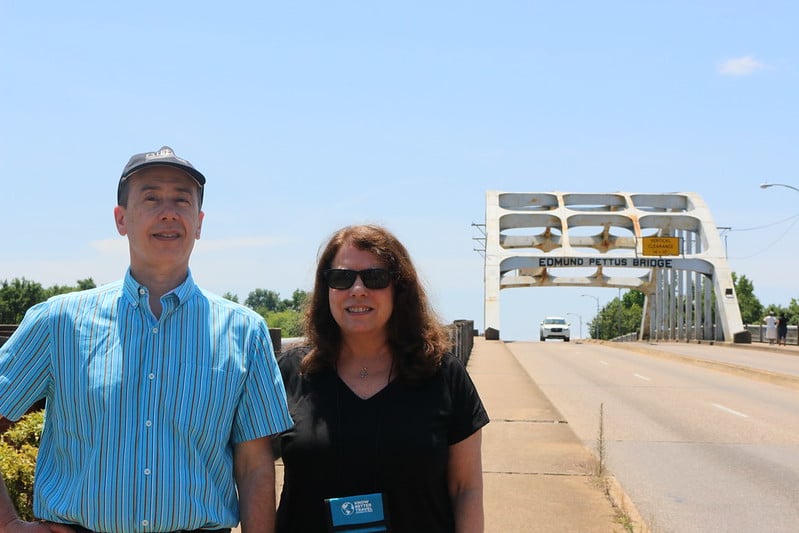
Photo: The author, Ruth Portela, with her husband Joe Portela at the Edmund Pettus Bridge. See the full Flickr photo album from the pilgrimage.
I participated in the pilgrimage to Alabama’s historic civil rights sites with Bishop Hughes and 40 other members of the Diocese of Newark. My interest in this history began in 2016, when I heard Isabel Wilkerson on the On Being podcast discussing her book The Warmth of Other Suns – an account of the Great Migration, when six million Black citizens fled the South for the North and West in search of a better life from WWI to 1970. It opened my eyes to a story that should be required reading in America. Ever since then I’ve wanted to visit these historic sites, so when I received the email about this pilgrimage, I responded: You bet I’m interested, sign me up!
Our first stop was Birmingham. We arrived in the afternoon, and after getting settled at the hotel, were privileged to be given an overview of Alabama’s civil rights history by Dr. Martha Bouyer, the Executive Director of the Historic Bethel Baptist Church Foundation.
The next morning, we set out to see sites in downtown Birmingham. We arrived as the Juneteenth parade was starting – a joyful and unexpected welcome. We even had a cameo on the local evening news coverage.
We began at Kelly Ingram Park, a gathering place for boycotts, sit-ins, and marches. Dr. Martin Luther King Jr. was arrested here and penned his searing “Letter from a Birmingham Jail.” Our guide was Paulette Roby, a Foot Soldier of the movement. I hadn’t heard that term before – it refers to the everyday people who marched because, as she put it, they were simply “tired of not being able to do.” As a child, Paulette wanted to go to the library, swim in the town pool, enter stores through the front door, and try on shoes before buying them. At age 13, she was jailed for protesting. Today, she chairs the Civil Rights Activist Committee Headquarters. “I was thirteen years old, and I’m still out here,” she said. “I’m still here.”
We toured the Sixteenth Street Baptist Church, where on a Sunday morning in 1963, dynamite planted by the KKK killed four girls: Addie Mae Collins, Cynthia Wesley, Carole Robertson (all 14), and Carol Denise McNair (11). That same day, two Black teens were also killed: Johnnie Robinson, by police, and Virgil Ware, by a white shooter. These murders shocked the nation and galvanized the movement. The church remains an active parish and a symbol of resilience.
We concluded our Birmingham visit at the Birmingham Civil Rights Institute, which offered a sobering look at segregation in Birmingham: separate water fountains, classrooms, a Freedom Riders bus, Dr. King’s jail cell door.
In Montgomery, guided by former Foot Soldier Jake Williams, we visited three sites created by Bryan Stevenson’s Equal Justice Initiative (EJI), which works to confront America’s legacy of racial injustice and mass incarceration.
The Legacy Museum took us through the brutal arc of slavery, Jim Crow, lynching, and modern incarceration. Located on a former cotton warehouse where enslaved people once labored, it was immersive and emotionally wrenching. A recurring theme was the trauma of forced family separation. I learned the term “the wailing place,” which referred to town auction blocks where families were torn apart.
Next, we visited the Freedom Monument Sculpture Park, located on the Alabama River where enslaved people were trafficked. Stevenson calls it a place not only of tragedy and trauma, but also of love, resilience, and triumph. Walking through original slave cabins – not reproductions – was haunting. No photos were allowed, but the images are etched in my mind.
We paused at the Episcopal Church of the Good Shepherd, a historically Black congregation, for a warm welcome and time to reflect.
The next day we visited the National Memorial for Peace and Justice, a sacred space with over 800 suspended steel monuments engraved with the names of more than 4,400 Black people lynched between 1877 and 1950. As the walkway descends, the monuments rise, evoking the terror of lynching. I was especially struck to learn that victims were sometimes chosen not for their own actions, but as stand-ins for others – or simply to intimidate the Black community. The site is an emotional and heartbreaking experience.
That afternoon we journeyed to Hayneville where Jonathan Myrick Daniels, a white Episcopal seminarian from Boston who had answered the call of Dr. Martin Luther King Jr. to join the protests, was murdered in 1965. Daniels was in a group of protesters that were arrested, and upon release he and three others walked to a nearby store. Barring their entrance stood an unpaid deputy with a shotgun. When he aimed at 17-year-old Black activist Ruby Sales, Daniels pushed Sales aside and took the fatal shotgun blast meant for her. The shooter claimed self-defense and was acquitted of all charges by an all-white jury.
In 1991 the Episcopal Church designated Jonathan Myrick Daniels a martyr, remembered annually on August 14.
Our final day, we were welcomed graciously at St. Paul’s Episcopal Church in Selma, where Daniels had worshipped and had successfully challenged the congregation to welcome Black worshippers. St. Paul’s congregation treated us to a wonderful breakfast before the Sunday service. It was a joy to worship together in community and fellowship, and to hear the inspiring words of the Rev. Henry Hudson.
Afterward, we toured Selma with our guide Kurt, another former Foot Soldier who was jailed at 13. He took us to the Brown Chapel AME Church – the launch point for the Selma-to-Montgomery marches – and to a monument honoring three martyrs: Unitarian minister James Reeb and civil rights activist Viola Liuzzo, both white, and Black local deacon Jimmie Lee Jackson. Kurt noted that Jackson’s name is listed last even though it should appear first both alphabetically and chronologically. “Even in death,” he said, “we are on the bottom.”
We ended our pilgrimage by walking across the Edmund Pettus Bridge, following in the footsteps of the marchers 60 years ago. It was meaningful and symbolic – we felt the weight of the past, as we confronted the ongoing struggle for equality today.
This pilgrimage was an eye-opening and important experience for all of us and will stay with me. What an honor to hear from our guides, who freely shared their stories of marching during the movement as children. Their work was impactful then and still relevant today.
Ruth Portela is a member of both Grace, Madison and Holy Spirit, Verona.

